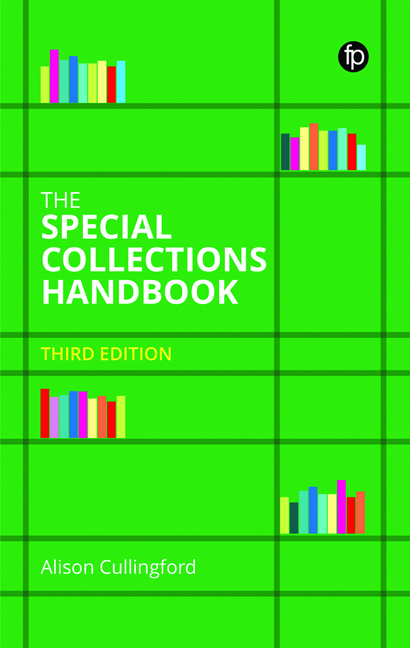Book contents
Appendix C - Latin and Palaeography
Published online by Cambridge University Press: 28 April 2022
Summary
The most common question asked about Special Collections skills is ‘Do I need to know Latin?’.
Latin was the language of learning and elites in Europe until well into the 20th century. Many medieval manuscripts, archives and printed books are in Latin. The various forms of Latin complicate matters: the Latin used in our medieval and early modern sources is radically different from the classical Latin of ancient Rome that dominated curricula of 19th- and 20th-century elite schools.
However, in many Special Collections roles, for example, working with modern collections, you will rarely encounter Latin. Even roles in libraries holding older material may rarely require you to spend much time using the language. Cataloguers are most likely to need Latin because they engage in such detail with texts.
However, do not panic. If you have some classical Latin, it is not so hard to adapt to medieval forms. If you have no Latin, a small acquaintance with it can go a long way, for example, the guides and glossaries listed in Appendix A help with the trickiest aspect of Latin: inflections.
Latin is a highly inflected language: words radically change form to give information about tense, person, voice, etc. This makes it harder to use dictionaries and online sources to find meanings.
Fortunately, you usually have plenty of context:
• When cataloguing printed books, the structure of the title page offers clues.
• Most early printed texts and many of the manuscripts you encounter will be online in some form in some edition.
• Medieval records follow highly stereotyped patterns of language. Once you know what a will or charter normally contains, it is not so difficult to follow.
If you wish to begin or improve your Latin, here are some ideas, partly shaped by a discussion on Latin learning on the archives-nra list, November 2020 – thank you to the participants.
Textbooks
Textbooks for GCSE and other qualifications are widely available along with online learning. Flanagan (2015) recommends the Cambridge Latin Course, www.clc.cambridgescp.com.
Such resources teach classical Latin. Works aimed at local and family historians are useful because they teach medieval forms, for example, Gooder (1978) and Stuart (1995). Winroth (2007) lists several introductions to medieval Latin for academics that could be explored once comfortable with Latin basics.
- Type
- Chapter
- Information
- The Special Collections Handbook , pp. 371 - 374Publisher: FacetPrint publication year: 2022



